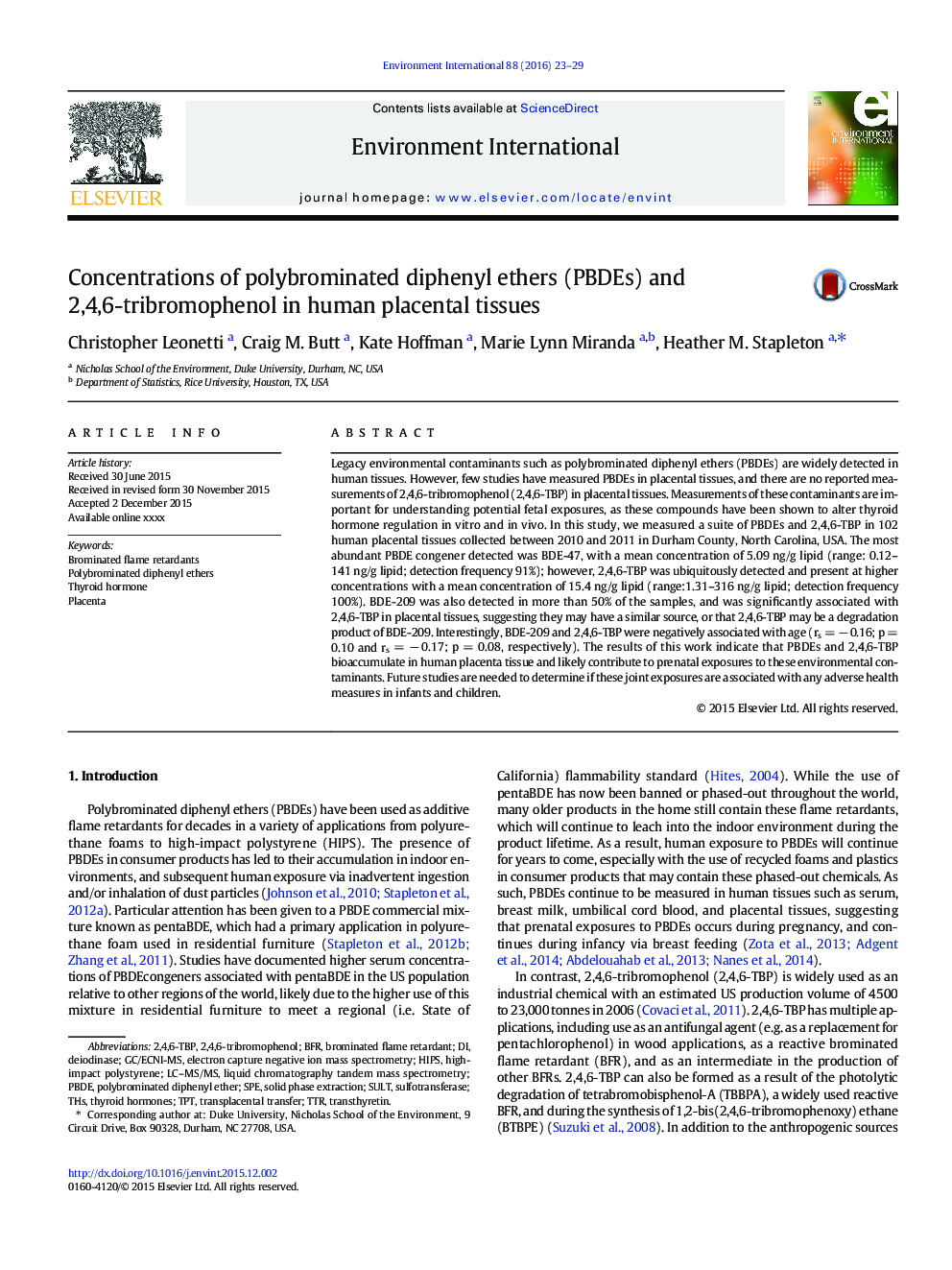| Article ID | Journal | Published Year | Pages | File Type |
|---|---|---|---|---|
| 6313333 | Environment International | 2016 | 7 Pages |
Abstract
Legacy environmental contaminants such as polybrominated diphenyl ethers (PBDEs) are widely detected in human tissues. However, few studies have measured PBDEs in placental tissues, and there are no reported measurements of 2,4,6-tribromophenol (2,4,6-TBP) in placental tissues. Measurements of these contaminants are important for understanding potential fetal exposures, as these compounds have been shown to alter thyroid hormone regulation in vitro and in vivo. In this study, we measured a suite of PBDEs and 2,4,6-TBP in 102 human placental tissues collected between 2010 and 2011 in Durham County, North Carolina, USA. The most abundant PBDE congener detected was BDE-47, with a mean concentration of 5.09 ng/g lipid (range: 0.12-141 ng/g lipid; detection frequency 91%); however, 2,4,6-TBP was ubiquitously detected and present at higher concentrations with a mean concentration of 15.4 ng/g lipid (range:1.31-316 ng/g lipid; detection frequency 100%). BDE-209 was also detected in more than 50% of the samples, and was significantly associated with 2,4,6-TBP in placental tissues, suggesting they may have a similar source, or that 2,4,6-TBP may be a degradation product of BDE-209. Interestingly, BDE-209 and 2,4,6-TBP were negatively associated with age (rs = â 0.16; p = 0.10 and rs = â 0.17; p = 0.08, respectively). The results of this work indicate that PBDEs and 2,4,6-TBP bioaccumulate in human placenta tissue and likely contribute to prenatal exposures to these environmental contaminants. Future studies are needed to determine if these joint exposures are associated with any adverse health measures in infants and children.
Keywords
BFRtransthyretinTPT2,4,6-TBPHIPSSULTDeiodinaseTTRPBDESPE2,4,6-TribromophenolLC–MS/MSTHsSolid phase extractionTransplacental transferbrominated flame retardantBrominated flame retardantsPlacentaPolybrominated diphenyl etherPolybrominated diphenyl etherssulfotransferaseThyroid hormoneThyroid hormonesHigh-impact polystyreneliquid chromatography tandem mass spectrometry
Related Topics
Life Sciences
Environmental Science
Environmental Chemistry
Authors
Christopher Leonetti, Craig M. Butt, Kate Hoffman, Marie Lynn Miranda, Heather M. Stapleton,
